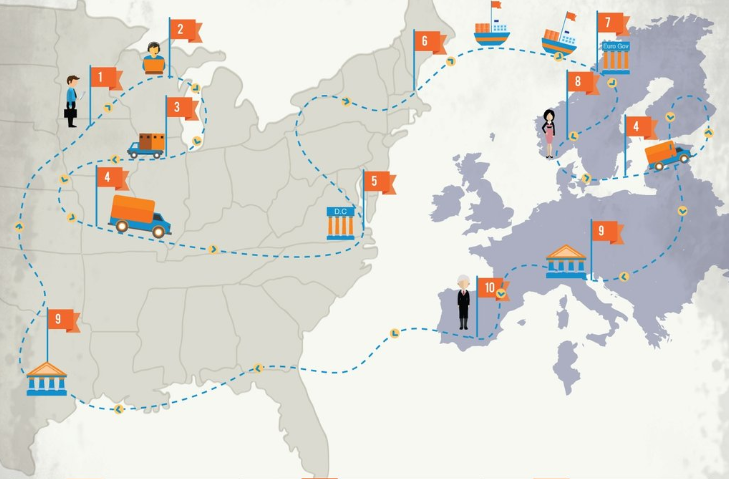Exports are goods and services that are produced in one country and sold to buyers in another. Exports, along with imports, make up international trade.
The whole export process involves many steps, from the exporting country to the destination involving the cooperation of many different organizations, the following diagram will explain in detail the specific steps
The export journey starts with the exporter; they’ve got the goods, and it’s ready to begin exporting.
The second step is to contact your shipping department; you have a lot of paperwork to do before the goods can go anywhere. Depending on what you are sending. You may need to prepare: a commercial invoice; a packing list; some type of certificate of origin; one or more bills of lading; other forms as necessary.
The freight forwarder will be the third step, they will arrange transportation of your goods, pack them, take them to a warehouse to store until shipment, and send them along on their journey. A freight forwarder can also provide assistance with insuring your goods against loss or damage.
Your inland carrier is the truck or carrier company that picks up the goods and transports them to and from the warehouses and ports on both sides of the journey. The inland bill of lading form is required for this part of the journey.
Then you need to pass the goverment contorl of your country. There are numerous regulations published by several different government agencies that may apply to your export shipments. In addition to documentary requirements, you need to determine it your goods require export licenses before they ship.
The international carrier can be a truck, train, ship, or plane. The corresponding bill of lading is a contract to move the goods to another country. Your freight forwarder will likely arrange for the shipment and prepare the bill of lading for you.
The next step is the customs control of the destination. Regulations vary depending on where in the world you’re exporting goods, so make sure you’re following import regulations, too. Plan for this step in advance so you can get paid on time
When your goods reach the port of import, an intermediate consignee may take legal possession of the goods to clear the goods through customs and ensure they get set for their journey to their final destination.
You will likely deal with at least a couple banks in different locations as part of your export journey. Depending on the method of payment and term of sale, the banks will arrange for wire transfers and currency conversions.
Once you or your bank has made the documents available to them, your importer will take possession of the goods
https://www.investopedia.com/terms/e/export.asp
https://www.shippingsolutions.com/export-documentation-procedure#VI
